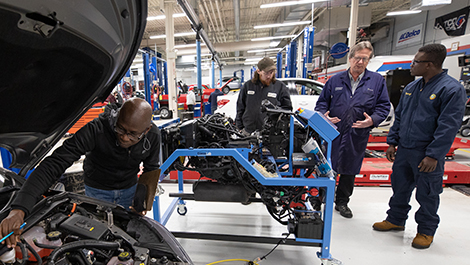
Popular Mechanics Auto Smartphone Smartphone Display is a great way for you to keep your focus on the road and not be distracted by your phone. It connects to your smartphone through a HUD application to display information directly from your smartphone on the dashboard. The head unit is placed onto the dashboard with a non-slip mat to prevent accidental movement. The package includes the device itself as well a reflective protector and a manual.
Smartphone heads-up display
Follow the Popular Mechanics Smartphone Display Installation instructions if you want to quickly review how to install a HUD into your vehicle. This kit includes a helmet-up display as well as a nonslip mat to protect the screen of your smartphone. The unit is three by six inches in size and comes with a hanging case. Follow these instructions to install your HUD.
Smartphones are able to accept HUD app, which works with many vehicles. A HUD can add hundreds of dollars to the vehicle's cost. A HUD can be a useful safety feature but it is expensive. If you're looking to have a HUD installed in your vehicle, you might want to consider purchasing a third party device. These devices may not be as effective as HUDs built into vehicles.
Requirements
The cockpit's HUD is crucial, especially when safety-critical maneuvers or time are involved. Pilots who do not have an HUD will need to refocus their eyes on both the interior or exterior of the cockpit in order for them to see clear information. High-quality HUDs support avionics such radar and cameras. They allow the pilot to see his information with no need for him to focus.

FAQ
How long is an automotive mechanic apprenticeship
It takes approximately three years to complete an automotive mechanic apprenticeship. This includes two years at school and two years working as an apprentice. The first year is used to learn all aspects of the trade including safety procedures and theory. During this time, you'll also learn how to use tools safely and efficiently. You'll spend the second year in on-the-job training, where you will gain experience in various trades. These periods will also give you the chance to take formal courses.
The final year of the program is spent gaining qualifications and becoming certified in the field. These include NVQs, which are obtained after passing industry-specific exams. In addition, there are HNCs (Higher National Certificates) that cover general subjects such as management, business administration, and customer service. Finally, there are City & Guilds certificates that are offered for those who wish to become qualified in certain trades.
What information do I need about car mechanics
To work as an auto technician, you don’t need to know much about cars. Only you need to know how things work. Most people begin by changing brake pads and tires, before moving on to more complicated repairs.
You'll need the ability to read and understand diagrams and to follow simple rules of good practise. It is also important to know how to determine if parts are damaged or need to be replaced.
It is important that you have proper training and guidance before you attempt to repair vehicles. This is especially true if your job involves expensive parts like transmissions or engines.
Although you won't have to know much about automobiles, you must be familiar with the basics of mechanical engineering as well as physics. This means understanding the principles behind how engines work and how brakes function.
You should also be ready to handle all kinds of situations. For example, you may find yourself working on a vehicle that has been involved in a serious accident. Additionally, you will need to have experience with handling accidents and breakdowns.
Finally, you need to be willing and able to quickly learn new skills. You will need to be able not only to diagnose problems but also to perform simple maintenance tasks like tightening bolts and nuts.
Is it hard to be a mechanic apprentice?
Although it's not an easy task, you will learn quickly and have many opportunities to advance.
You will need patience and perseverance. You must also know how to fix cars, trucks, and motorcycles.
Customers and relatives can exert a lot on you. However, you shouldn't be forced to make difficult decisions.
If you like fixing cars, this could be a great career option. It's a job where you can earn a decent salary and build up your business.
However, you might prefer to go down another route. If this is the case, you might want to become a technician.
This means that you can use your technical knowledge to help other workers. This could be a way to help technicians with their problems or to teach them new techniques.
Another option is to become an advisor in service. Here, you'll provide advice and assistance to customers when they bring their cars to a garage.
Your decision depends on what you want to do. There are many options to choose from, and it is up to you which one suits you the best.
How do I fix my car for a hobby?
If you are interested in cars, why not take it on as a hobby? You could learn how to repair them, buy parts for them, sell them or just enjoy them. It's a fun hobby that you can do if it interests you.
However, it's not easy to turn this into a full-time career. It requires hard work and dedication. It will also require a large amount of investment.
If you don't have any good reasons to be involved in cars, it may be better to just let it go.
Statistics
- The U.S. Bureau of Labor Statistics (BLS) reports that the job outlook for automotive service technicians and mechanics is expected to decline by 4% from 2019 to 2029. (indeed.com)
- There were 749,900 jobs available for automotive service technicians and mechanics in 2016, which is expected to grow by six percent through 2026. (jobhero.com)
- According to the BLS, the median annual salary for automotive service technicians and mechanics in the United States was $44,050 in May 2020. (uti.edu)
External Links
How To
How to properly diagnose your vehicle for repair
Before you can determine if your car requires repairs, it's important to first analyze the symptoms. These steps will help you diagnose your car properly.
-
Check engine lights. Inspect the dashboard light indicators. These include the engine lights, the oil pressure gauge and the battery light indicators. The RPM gauge and coolant temperature gauge should also be checked. It could indicate that your vehicle is having problems.
-
Pay attention to the treads on your tires. Tires can become worn and cause problems in handling and braking. You should inspect the treads on your wheel. They should be clean and smooth. You can do this by taking off the wheels. Check the tread condition with a flashlight.
-
Check the level of brake fluid. You should always keep track of the amount of brake fluid in your vehicle. This helps ensure that your brakes operate properly. Low brake fluid levels can cause brake failure when you apply pressure.
-
The suspension system should be tested. The suspension system in vehicles absorbs vibrations and shocks. It improves control and allows for smoother accelerations or decelerations. You might notice a wobbly feeling or uncontrollable shaking in your vehicle if it has a problem with its suspension. To test whether your vehicle has a suspension issue, try putting weight on the front or rear axle and observe the movement.
-
Examine your steering column. Steering columns connect the steering wheels to other parts of the vehicle. The steering column can often be damaged by an accident. If yours feels loose or shaky, you should replace it.
-
Pay close attention to the exhaust tube. Exhaust pipes help move gases from the combustion chamber to the atmosphere. Exhaust pipes that are cracked or leaking can allow harmful fumes to enter your cabin. You should also fix any bent tailpipes immediately.
-
Take a look under your hood. Take a look underneath the hood to find any strange or unusual items. Leakage of fluids in your engine could indicate that it is leaking. In addition, if you notice an unusual smell coming from your engine compartment, you should contact a professional technician.
-
You should inspect your air filter. The outside environment can collect dust and other debris in your vehicle's air filters. Dirty air filters can cause your vehicle to run poorly. Replace your air filter regularly.
-
Verify the fan belt. The fan belt is the link between the engine and the transmission. The engine will not turn if the fan belt breaks. Replacing the belt is simple. All you need are a screwdriver & pliers.
-
You should inspect the radiator and hoses. The radiator hose carries water from the radiator to the engine. If it becomes cracked or damaged, it can leak hot liquid onto the engine. You only need a pair of needle-nose pliers and a small wire brush to repair the hose.
-
Make sure you have the windshield wipers checked. Windshield wipers use electricity to wipe away rain and snow. If they stop working they could leave streaks behind on your window glass. You can fix the problem by changing the washer fluid.
-
Verify the condition of your battery cables. Your car's electrical system is powered by batteries. Make sure you disconnect the negative cable before replacing batteries. Failure to do so can damage your alternator.
-
Pay attention to your headlights. The headlights provide illumination for the road ahead. It can lead to poor visibility if they aren't working properly. To determine if your bulbs are out of date, check them.
-
Make sure you have your lights on. Lights warn other drivers when you approach them at night. If one doesn't work, it could distract you and lead to an accident.
-
Check your brakes. Brakes slow down your vehicle before a collision. If they aren't working correctly, you could lose control of your car and crash.
-
Check the oil regularly. Keep your engine lubricated with oil. It protects metal parts and prevents them from wearing too quickly. Changing the oil every month is recommended.